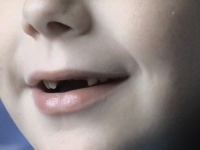
Q: My 4-year-old client has no strident sounds and I was thinking about starting with S. Is this right? And how should I teach it? Whether or not to start with S as your first strident sound depends entirely on the client. Here is advice to get you going: Expand Your Horizons Don’t just look at the strident sounds (S, Z, Sh, Zh, CH, and J). Look at all 11 fricatives and affricates together—Th, Th, F, V, S, Z, Sh,…



